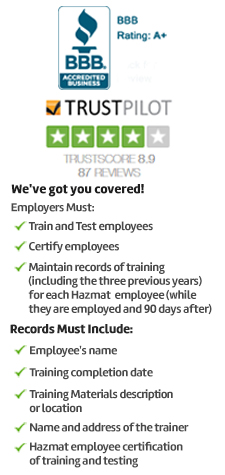
Healthcare GHS Hazard Communication (Right to Know)

This course presents an overview of the requirements of OSHA’s Hazard Communication Standard, which requires the development and dissemination of information about the identities and hazards of chemicals used in the workplace, specifically within the healthcare industry.
Governing regulations
OSHA’s Hazard Communication Standard provides a framework to ensure that information about the protective measures is disseminated to employers and employees. Healthcare employers with hazardous chemicals in their workplace are required to have a hazard communication program that includes SDS, employee training, and the labeling of containers of hazardous substances. The requirements of the Standard can be found in Title 29 of the Code of Federal Regulations (CFR), Part 1910.1200.
Course Overview
Chemical exposure may cause or contribute to many debilitating health effects, including heart ailments, cancer, sterility, central nervous system disorders, and kidney and lung damage. Because of the seriousness of these safety and health problems, the Occupational Safety and Health Administration (OSHA) issued the Hazard Communication Standard to help employers and their employees gain a better handle on these hazards and how to minimize them.
Who Must Take this Course?
Every person at a healthcare facility has a responsibility to ensure that health and safety standards are being observed at all times. Compliance with the Standard should be an ongoing effort at hospitals and other healthcare facilities, and both employers and employees must actively participate to ensure the success of any hazard communication program in place.
Course Format
Our Hazard Communication for Healthcare Workers Training course consists of content, graphics, audio, self-check questions, and a final exam.
Upon successful completion each student will receive Hard copy of completion certificate and can print a wallet card
Continuing education credits?
Each student will receive 0.2 CEUs (or 2 CMEs) for completing this course.
Topics Covered
Specific topics covered in this course include:
-
- About This Course
- Course Objectives
- Introduction to Hazard Communication for Healthcare Workers
- Background Information about the Standard
- Major Changes to the Standard
- Importance of the Standard
- Key Terms
- Employer and Employee Responsibilities
- Employee Training
- Chemical Hazards
- Routes of Entry
- Recognition of Health Hazards
- Health Effects of Chemical Hazards
- Chemical Agents and Their Health Effects
- Written Hazard Communication Program
- Additional Requirements of the Written Hazard Communication Program
- Hazard Inventory
- Hazard Classification
- Health Hazard Classes
- Labels
- HMIS and NFPA Labeling Systems
- HMIS Labeling System
- NFPA Labeling System
- Safety Data Sheets
- Exposure Controls: Elimination and Substitution
- Exposure Controls: Engineering and Work Practice Controls
- Exposure Controls: Personal Protective Equipment
- Blood-borne Pathogens
- Hepatitis Viruses
- Hepatitis B Virus (HBV)
- Hepatitis C Virus (HCV)
- HIV and AIDS
- OSHA’s Blood-borne Pathogens Standard
- Requirements of the Blood-borne Pathogens Standard
- Exposure Control Plan
- Sharps Injury Log
- Engineering and Work Practice Controls
- Needleless Systems and Engineered Sharp Protection
- General Safety Practices
- Emergency Planning and Community Right-to-Know Act (EPCRA)
- Emergency Planning and Emergency Release Notification
- Annual Inventory
- Toxics Release Inventory
- EPCRA Inspections
- Summary
- Additional Resources
- Exam

 NEBOSH CERTIFICATE
NEBOSH CERTIFICATE NEBOSH DIPLOMA
NEBOSH DIPLOMA IOSH
IOSH SAFETY DIPLOMA
SAFETY DIPLOMA CPD UK
CPD UK ROSPA UK
ROSPA UK FOOD SAFETY
FOOD SAFETY 



